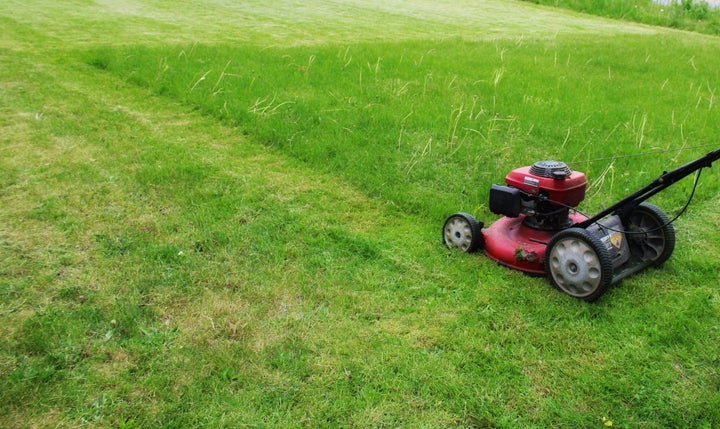
I understand, I do: it’s Britain, and it’s summer. It’s not going to offer us Algarve-like climes. But come on ― does the UK’s cloud cover really need to commit to the bit THIS intensely?
Though the weather is (thankfully) set to turn soon, it seems that rain will persist to one degree or another throughout the season. And while thunderstorms can be surprisingly good for your lawn ― and even though your plants prefer rainwater to all other forms of hydration ― it turns out that the ever-present precipitation can have an unwanted side effect on your lawn.
Lawn care and garden machinery expert Cobra shared that mowing your lawn shortly after rain can seriously damage the strands. So, we thought we’d share why you should consider putting the mower away for a little while after rainfall ― and some other tips to keep your lawn in tip-top shape.
Avoid cutting the lawn soon after the rain
Yes, waiting for a rain-free spell before you can mow your lawn can feel like a surefire path towards an overgrown yard. But Cobra reckons that it can cause some serious damage to your machine.
“Dry spells can be rare in autumn and a common mistake people make is to mow the lawn after a period of rain or whilst the grass is still wet. While it may be tempting to seek any opportunity to get the grass mown, mowing wet grass can damage your mower as it is more likely to clump and jam the cutting blades, which could cause things to overheat,” they shared.
And the Royal Horticultural Society (RHS) say that you should never mow wet or frosty grass for the sake of the soil underneath, too. “This can damage your turf and compact the soil. Wait until later in the day when the lawn has dried out or defrosted, or postpone mowing to another day,” they say.
Okay, so ― when should I mow?
Well, first of all, some good news: you don’t need to mow as much in autumn, as the grass grows more slowly.
As the weather gets colder and wetter, the grass begins to focus on strengthening its roots instead of becoming longer. “While it is doing this, instead of stopping cutting, we advise raising the height of your mower’s cutting blade to approximately 5cm and only mowing every week or fortnight.
This will stop putting undue stress on the grass and will leave longer grass stems and consequently more surface area for your lawn to capture sunlight as the amount it is exposed to reduces,” Cobra said.
And you can put your mower away completely after the first frost (usually between September and October).
It’s important to examine your soil type before setting a mowing schedule ― and no matter what you do, keep those soggy strands away from your strimmer.